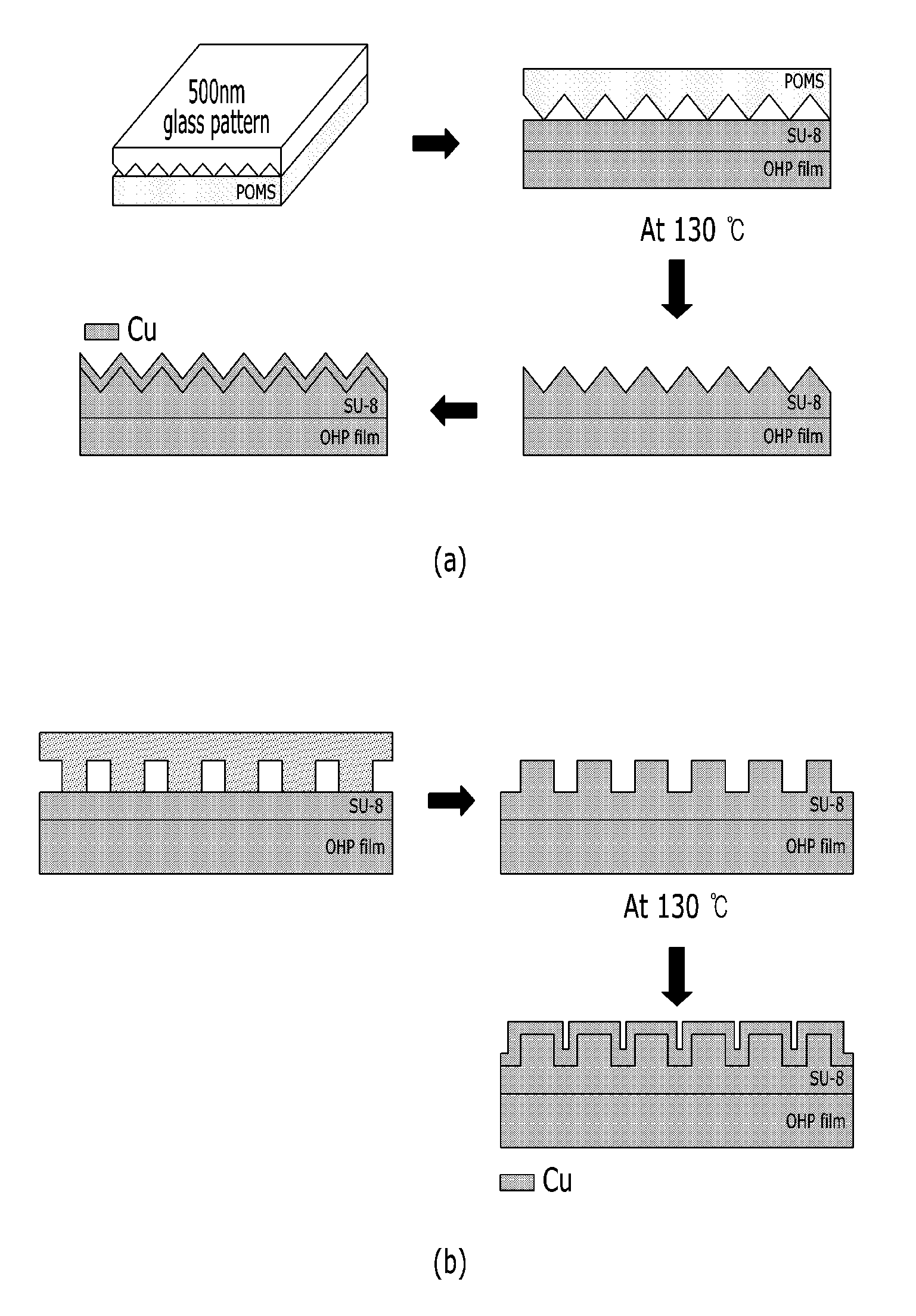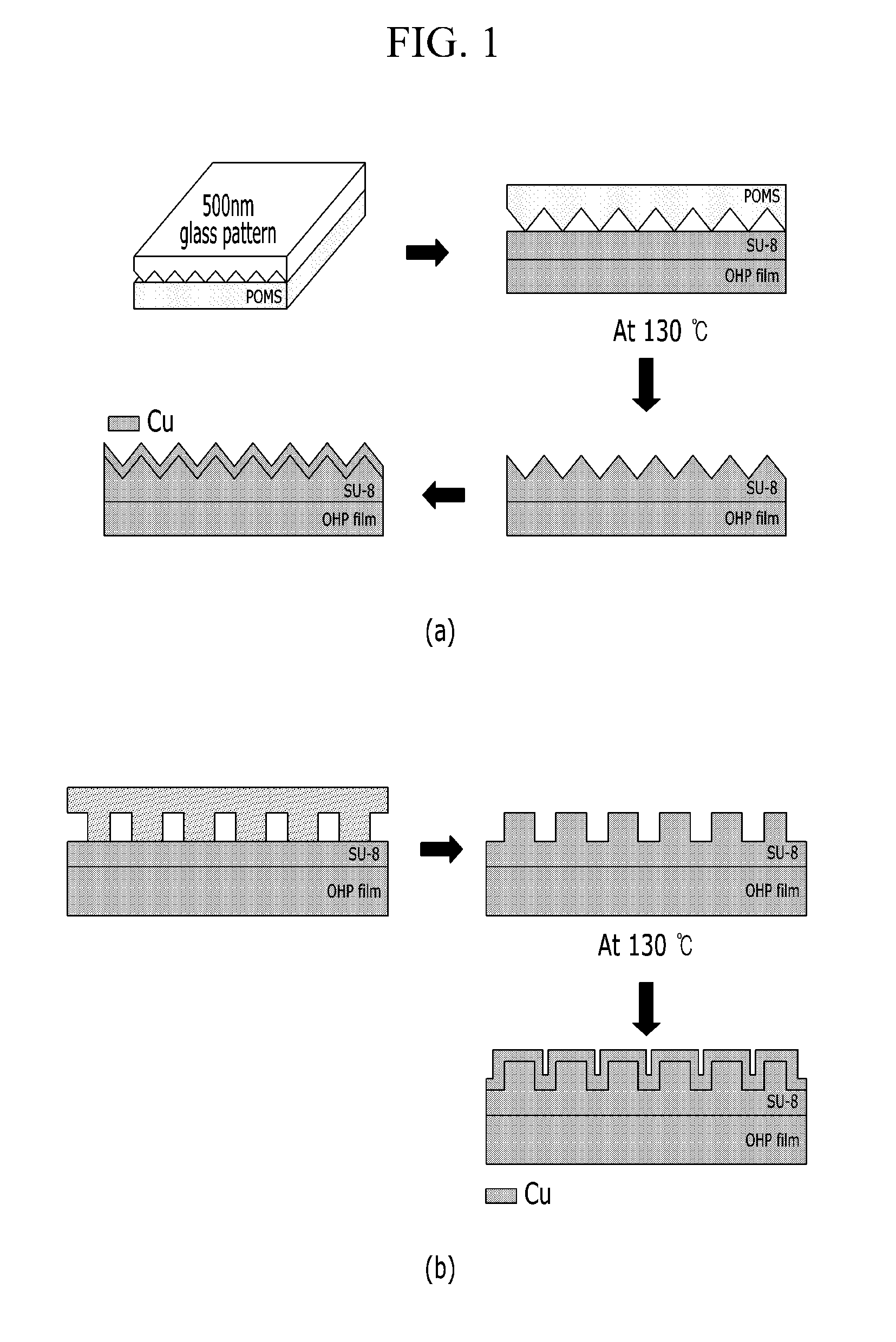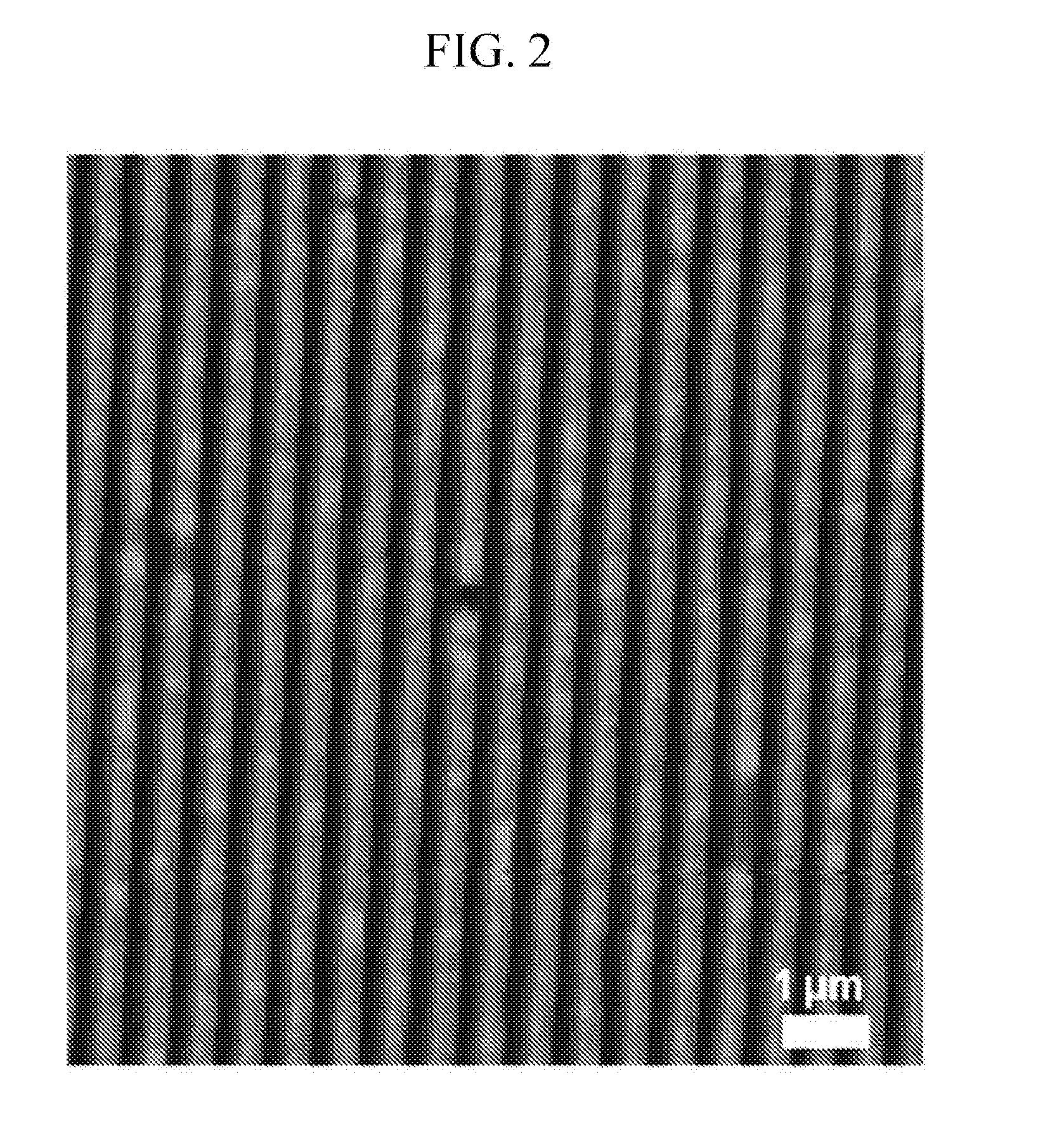Current collector for flexible electrode, method of manufacturing same, and negative electrode including same
a technology of current collector and flexible electrode, which is applied in the direction of cell components, final product manufacturing, sustainable manufacturing/processing, etc., can solve the problems of reducing battery capacity, deteriorating battery output characteristics, and greatly deteriorating battery performance, so as to prevent the delamination of negative active material, excellent capacity retention, and excellent capacity characteristics
- Summary
- Abstract
- Description
- Claims
- Application Information
AI Technical Summary
Benefits of technology
Problems solved by technology
Method used
Image
Examples
example 1
[0082]FIG. 1 is flowchart describing a method for manufacturing a current collector for a flexible electrode in accordance with one embodiment of the present invention. In FIG. 1, the difference between (a) and (b) is the shape of the surface of a polymer layer (i.e., the shape of protrusions and grooves). The manufacturing is the same except for the surface shape. Specific examples are as follows.
[0083]Polyethylene terephthalate was used as a polymer substrate. The polymer substrate was precipitated in tetrahydrofuran for 1 hour and then cleaned with distilled water.
[0084]The cleaned polyethylene terephthalate polymer substrate was spin-coated with SU-8 (MicroChem, Su-8 2000.5), which is a cross-linkable epoxy-based polymer, at 3000 rpm for about 1 minute.
[0085]After the coating process, the polymer substrate was dried in an oven at 80° C. for 1 hour to improve the adhesion between the polyethylene terephthalate polymer substrate and the spin-coated polymer layer.
[0086]The polymer ...
experimental example
[0091]Atomic Force Microscope (AFM) Photograph
[0092]FIG. 2 is an atomic force microscopic photograph after protrusions and grooves are formed on a polymer layer.
[0093]FIG. 3 is an atomic force microscopic photograph after the polymer layer with the protrusions and grooves goes through ultraviolet radiation and heat treatment.
[0094]FIG. 4 is an atomic force microscopic photograph after the polymer layer is deposited with copper.
[0095]It may be seen from FIGS. 2, 3, and 4 that the shape of protrusions and grooves was not changed even though the protrusions and grooves were formed on the polymer layer and then went through the ultraviolet ray radiation process, the heat treatment process, and the process of depositing copper on the polymer layer.
[0096]Surface Photograph
[0097]FIG. 5 is a surface photograph of the polymer layer of Example 1 including protrusions and grooves.
[0098]Although FIG. 5 is a photograph of a plastic pattern where protrusions and grooves were formed which was take...
PUM
| Property | Measurement | Unit |
|---|---|---|
| height | aaaaa | aaaaa |
| height | aaaaa | aaaaa |
| Ra | aaaaa | aaaaa |
Abstract
Description
Claims
Application Information
 Login to View More
Login to View More - R&D
- Intellectual Property
- Life Sciences
- Materials
- Tech Scout
- Unparalleled Data Quality
- Higher Quality Content
- 60% Fewer Hallucinations
Browse by: Latest US Patents, China's latest patents, Technical Efficacy Thesaurus, Application Domain, Technology Topic, Popular Technical Reports.
© 2025 PatSnap. All rights reserved.Legal|Privacy policy|Modern Slavery Act Transparency Statement|Sitemap|About US| Contact US: help@patsnap.com



